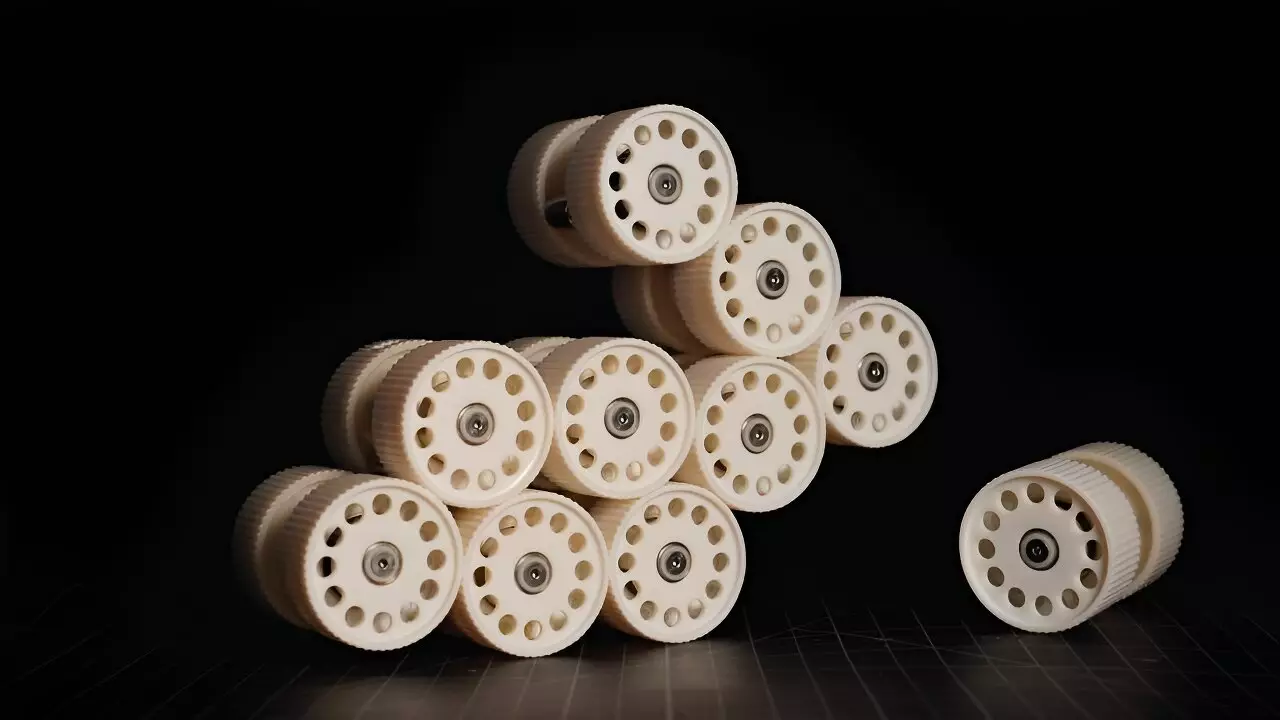Nature has always been a source of fascination for scientists, with swarming behaviors in animal groups serving as a prime example. Physicists like Heinrich Jaeger and Baudouin Saintyves have taken a keen interest in the fluid-like motion of swarms. Observing how swarms can move in harmony without a leader and adapt to their surroundings has inspired the development of the Granulobot, a groundbreaking modular robot that blurs the lines between soft, modular, and swarm robotics.
The Granulobot is a collection of simple, cylindrical, gear-like units that are equipped with magnets, allowing them to connect and interact with one another. These units can reassemble and reorganize themselves to adapt to different environments. By utilizing principles of granular materials, the Granulobot is able to transition between states of rigidity and fluidity, similar to how a swarm of animals behaves.
Jaeger emphasizes the importance of soft robotics, especially in scenarios where robots need to interact with humans. Soft robots possess the ability to change shape, making them versatile in navigating through confined spaces and unpredictable terrains. This flexibility is crucial for applications such as search and rescue operations where traditional rigid robots may not be effective.
Granular materials exhibit properties of both liquid and solid behavior based on contact rather than temperature. The concept of jamming, where particles in a system are closely packed and prevent flow, is key to the functionality of the Granulobot. Jaeger compares this phenomenon to a traffic jam, highlighting how jamming can be controlled and utilized in soft robotics to transition between malleable and solid states.
While the current Granulobot prototype showcases a modular, self-organizing design, Jaeger envisions future iterations that could be scaled down to tiny individual units or upsized to create larger, more complex structures. The versatility of the Granulobot extends beyond scale and temperature, with the potential for applications in various environments such as underwater or outer space.
The Granulobot represents a fusion of robotics and physics, pushing the boundaries of what is possible in both fields. By harnessing the principles of swarming behavior and granular materials, Jaeger and Saintyves have created a versatile and adaptable robot that opens up new possibilities for the future of robotics and material science. As they continue to explore the potential of the Granulobot, the line between programmable material and autonomous robot becomes increasingly blurred, paving the way for innovative technological advancements.


Leave a Reply